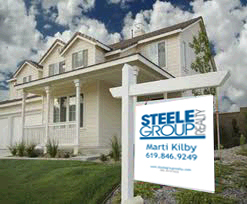It’s not your imagination: The housing market recovery is on a roll, upwards! A recent survey of over 100 real estate and economic experts predicts that by the end of 2013, home values will have increased nationwide by an average of 6.7% over a year ago. This is significantly more than the 5.4% bump anticipated in an earlier study.
The Home Price Expectations Survey was conducted by Pulsenomics, LLC on behalf of Zillow. Based on market expectations, the panel predicts that home prices will continue to rise until 2017, coming very close to the record highs of May 2007. The rate of increase however will not be as dramatic as 2013, with appreciation anticipated to slow to 4.4% in 2014 and down to 3.4% in 2017. This represents a cumulative increase of 23.7% through 2017, at which point appreciation is expected to be more in line with historic norms.
Interestingly, most panel members did not feel that rising interest rates would derail the recovery, unless interest rates rise above 6.0%. According to Zillow Senior Economist Dr. Svenja Gudell, “As long as interest rates don’t rise too far and too fast, most markets should be able to absorb these changing dynamics and remain healthy.” It is anticipated that as interest rates rise, investors will pull out of some markets, increasing inventory and helping to stabilize the market.
What does this mean for you? If you are looking to buy, now is the time as prices will continue to rise. Looking to sell? You are more likely to get top dollar between now and the end of the year as inventory, especially here in San Diego County is very limited. As appreciation slows and more inventory hits the market it is less likely that the multiple offer scenarios that we are currently experiencing will continue.
Questions about the value of your home? Interested in an investment property? Just give me a call and I’ll be happy to answer all your questions.








